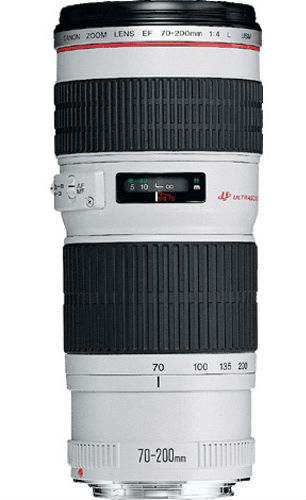 The majority of photographs the average user takes could be classed as portraits; photographs of people. One of my very first pieces of advice when someone asks me to look through their photos is ‘get closer’.
The majority of photographs the average user takes could be classed as portraits; photographs of people. One of my very first pieces of advice when someone asks me to look through their photos is ‘get closer’.
But doing the exact opposite, getting further away from our subject, offers some unique opportunities and perspectives that would otherwise be unavailable to us, and can be one of the first steps to creating a distinctive style in our photography. Today I’m going to look at some of the scenarios in which you can use long-distance photography effectively and also offer some tips on how to get the most from your long-distance photography
[I just thought of a great alternate title for this article – ‘Have A Great Long-Distance Relationship With Your Telephoto Lens’. Comic genius that is.]
So what are some of the scenarios in which we might decide to go long? Really there are plenty.
Wildlife photography actually demands a long-distance approach, as the animals you’ll want to photograph are either a) easily spooked b) dangerous or c) hard to find, so every sighting will have to count.
Street photographers usually opt for an up-close approach, with something like a 35mm lens, that allows them to tell stories by documenting street scenes. In fact David Keenan actually advises budding street photographers to avoid telephoto lenses. To me that seems a little bit hardline. I think if you want to photograph unobtrusively, and capture scenes surreptitiously (which is what most street photographers try to do anyway) then the zoom lens is a fantastic tool to have in your bag.
In my work as a wedding photographer, I need a variety of lenses in my bag, although the equipment junkies might be disappointed by how few I actually carry! (Check out this post to read about my wedding photography kit.) But more important than carrying different lenses is knowing when and how to use each one to it’s full potential.
For example, one of my rules of thumb for using my 16-35mm lens is never to shoot it in the portrait (vertical) orientation. The fisheye distortion can be very unflattering, and in general makes things look a bit odd, a bit whacky. Of course this can be used to your advantage, but it really just depends on the story you are trying to tell.
My 70-200mm lens on the other hand is a much more flexible lens in that it works great in either portrait or landscape (horizontal) orientation. In fact this is exactly the kind of lens you need if you want to make really great portraits because the distortion is almost non-existant. I also use this lens a lot when I’m photographing outdoor wedding ceremonies. It allows me to move around the perimeter of the space where the guests are assembled and get lots of candid close-ups. And when the groom gets permission to kiss the bride, I’ll be right at the end of the aisle getting shots that look like I’m positioned much closer (and hoping that no overeager photography enthusiasts get between me and the newlyweds!).
Ok so let’s talk tips.
 1. Get A Telephoto Lens
1. Get A Telephoto Lens
Like a lot of photographers, I’m a huge fan of Canon’s 70-200mm f/4L lens. It delivers incredible image quality at a relatively low price. If you’re a Nikon shooter with deep pockets you might like the Nikkor 70-200mm f/2.8 which comes with image stabilization. If you’re on a budget however you might want to look at one the the ‘hyperzoom’ point-and-shoots like the Sony DSC-H300 which I reviewed a little while back.
2. Get A Tripod
A tripod is a pretty essential piece of kit for any photographer, and it’s often when you break out the big, heavy telephoto lens that you’re going to want to give your arms a rest and call on your trusty tripod. A monopod is another option which is a bit more lightweight and allows you to be more mobile.
3. Use A High Shutter Speed
One of the things you need to be really aware of when you’re shooting at long focal lengths is camera shake. I’ve come up with a nice analogy to illustrate the point: imagine you’re holding a short stick, say 30cm long. If I ask you to point it straight and hold it steady, you’ll probably be able to do so with ease. If I give you a stick that’s 200cm long however, you’ll find that even the most minute movements of your hand will translate to big movements at the end of the stick. This is exactly how camera shake works; small movements of your hands cause blurred images. The solution is to shoot at higher shutter speeds. The rule of thumb is that the shutter speed (expressed as a fraction of a second) should never be less than double the focal length. So for example, if your focal length is 200mm, your shutter speed should not be less than 1/400th of a second. Of course if you’re using a tripod that will allow to shoot at basically any speed you like, but do bear in mind that even pressing the shutter release button can cause a movement of the camera, so either use a shutter release cable, or the self-timer. More and more cameras are being made with wifi capabilities (as I discussed last week) which allow you to activate the shutter remotely via an app on your smart device, which is really handy in this instance.
4. Use A Wide Aperture For Portraits
Portrait photographers love lenses with really wide maximum apertures, because it allows them to throw the background way out of focus, which causes your subject to really stand out. The problem is that for the most part these lenses are expensive and are often prime (non-zoom) lenses. If I set my 70-200mm lens to it’s maximum aperture (f/4) and work at a focal length of 100mm or greater, I can achieve the same effect, which is a really neat trick.
5. Get Inspired!
As I said before there are plenty of great ways to use long-distance photography, you just need to figure out how to make it work for you. Award-winning Vancouver photographer Marc Koegal creates beautiful and haunting long-exposure images. Gray Malin makes amazing images of beaches from above. I bumped into the world-renowned wildlife photographer Martin Eisenhawer in Vancouver one day when he asked me to photograph him and his wife and their newborn. His work is fantastic. Scott Schuman runs a blog called The Sartorialist and he photographs well-dressed people he encounters on the street.
So look at what some other photographers out there are doing, think about the place you live and the opportunities around you and get out and shoot some new work!



